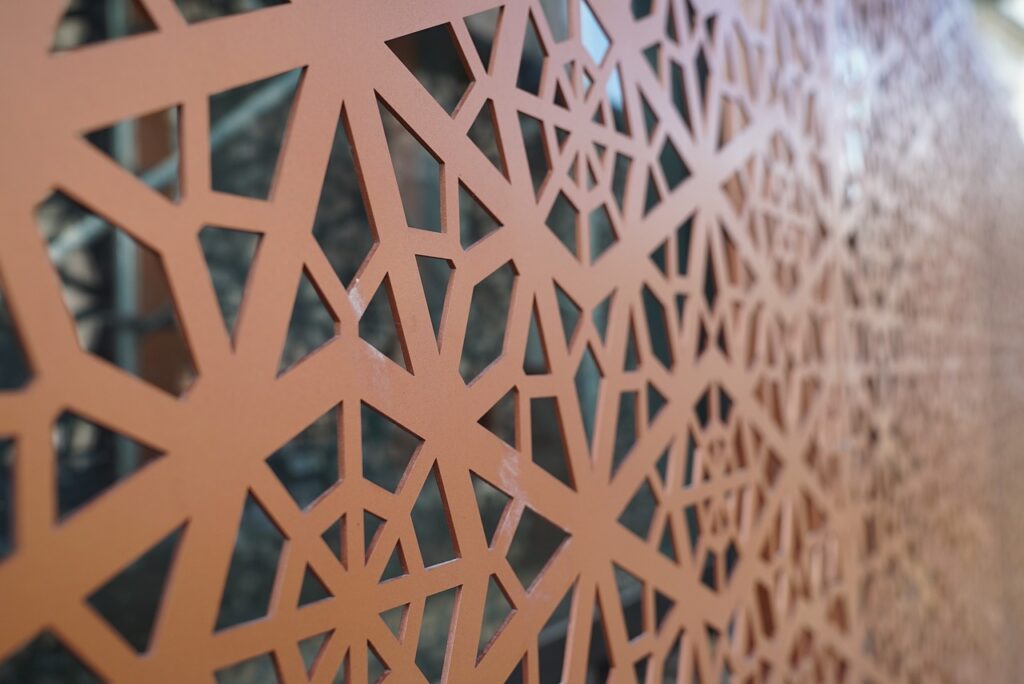
Exterior or interior, most of the walls these days are cladded with one material or the other. Be it tiles, Gypsum wall boards (GWB), stone, Aluminum composite panels (ACP), steel, glass, bronze and on and on and on. It has become quite standard now, and you can witness this, especially in buildings erected by builders and realtors. And why not, this is what sells.
What once used to be a purposeful installation, has now become a trend, a status symbol, a mark of class. Everyone wants to go for this option, no matter what their budget is. But this said, it can either go uphill or way downhill from here.
In the historic times, as we are all aware, materials like stone and marble were used as building block units, examples of which are visible all over India in the form of monuments and historic religious structures. Buildings fit for Kings and Gods. The ultimate landmarks. So quite obviously people imitated it to create their home sweet home and make them stand apart in the entire neighborhood. I think you will be able to see the approach here. Along with that, cladding was also done where it was essential to protect the structure underneath, like in toilets, kitchen, other wet areas etc.
With time, different cladding techniques and materials came into existence. Grit stone finish became an identifying feature for DDA flats in Delhi, and thanks to Raj Rewal, so did sandstone for Government organization buildings. We also saw a time when every new public building was cladded in ACP from top to bottom. I am grateful that that trend is over (cough eyesore cough). Many new structures are coming up on a daily basis dressed in curtain glazing (glass). Exterior wall cladding, be it marble, travertine, granite, some ugly ceramic tile you should never have put on the exterior facade but you did, has become the way to go for every architect, builder and home owner.
So you will ask, “what problem do you have with it, lady?” Let me break it down for you.
If not done correctly, the result can be disastrous, both in appearance and performance. From a small residence cladded in repetitive tiles meant for toilet walls to huge commercial complexes covered in curtain glazing without considering climatology, orientation and air-conditioning costs.
Once in my street, a huge sandstone piece, cladded without considering the weight of the stone, landed right on top of a car windscreen parked in front of that house, from third floor height. You must have seen walls missing pieces of stone while roaming the city, think again about them and thank God that you were not standing underneath them when they fell.
Another major problem I have with cladding, is that it has now become a way to cover up inner flaws in the building. A very common myth home owners have is, if water is seeping through a wall, clad the wall with tiles and that will solve the problem. Please people, do not take nature so lightly! Water that can cut through mountains and lands to find its ways to the great seas, can obviously find it’s way out of tiles, if not through it, then around it.
It has become a practice by builders to hide structural flaws with cladding. You may never know what you are investing in, because all you can see is a beautiful veil hiding the truth. Issues start to arise after a few years, but it gets too late to do anything about it then. Not just builders, almost everyone follows this principle of ‘out of sight, out of mind’, mainly because making alterations to something just built or cast seems like a very expensive and impossible task.
Now you see the problem I was referring to? Giving preference to finishes and appearances more than design, construction materials and building techniques is degrading architecture practice day by day. Many designers and architects are going after false aesthetics more than appreciating the raw structural beauty of a building. Many self proclaimed architects fool people by shifting the client’s focus on the shiny end result, ending in clients thinking that making things pretty is what architecture is all about. This trend has creeped into everyone’s mind and has become so crucial to them.
And as I often say, “Architecture embeds itself with the people who experience it, and holds the power to alter minds”, I will conclude this blog with just one question… Have you ever heard of a disease called ‘Body dysmorphic disorder’?